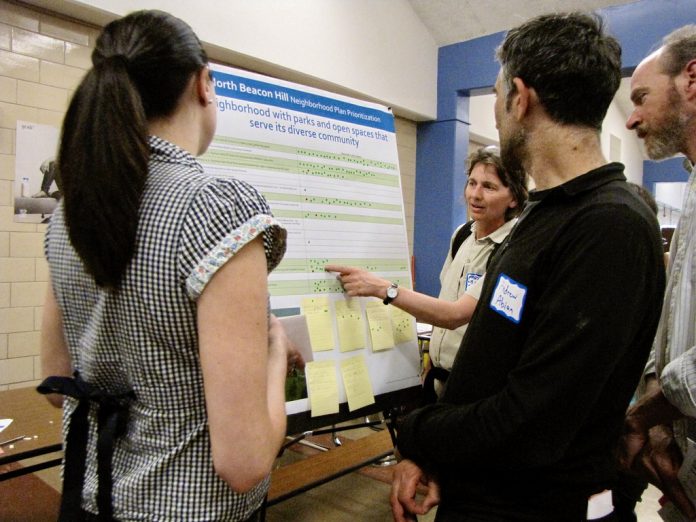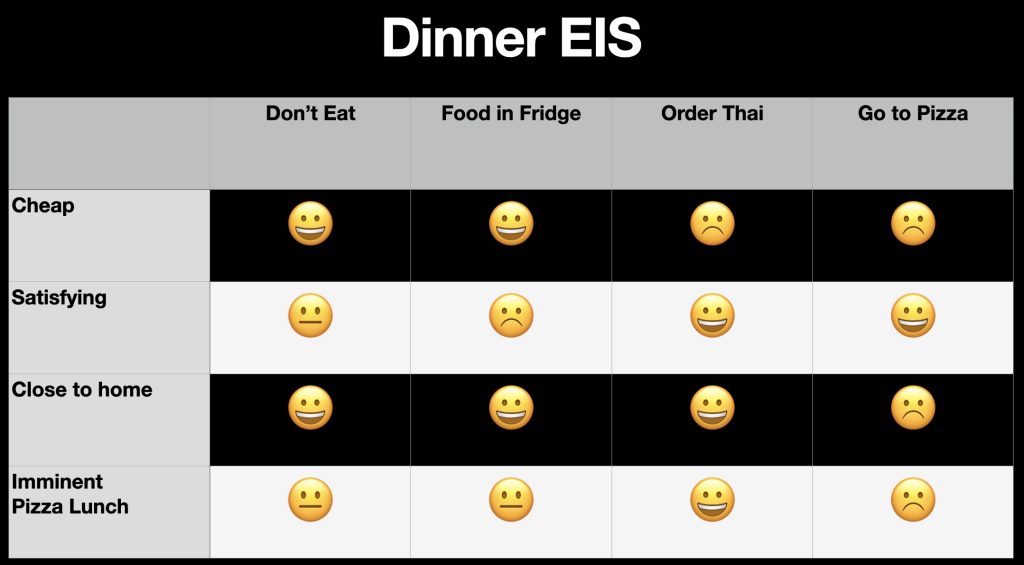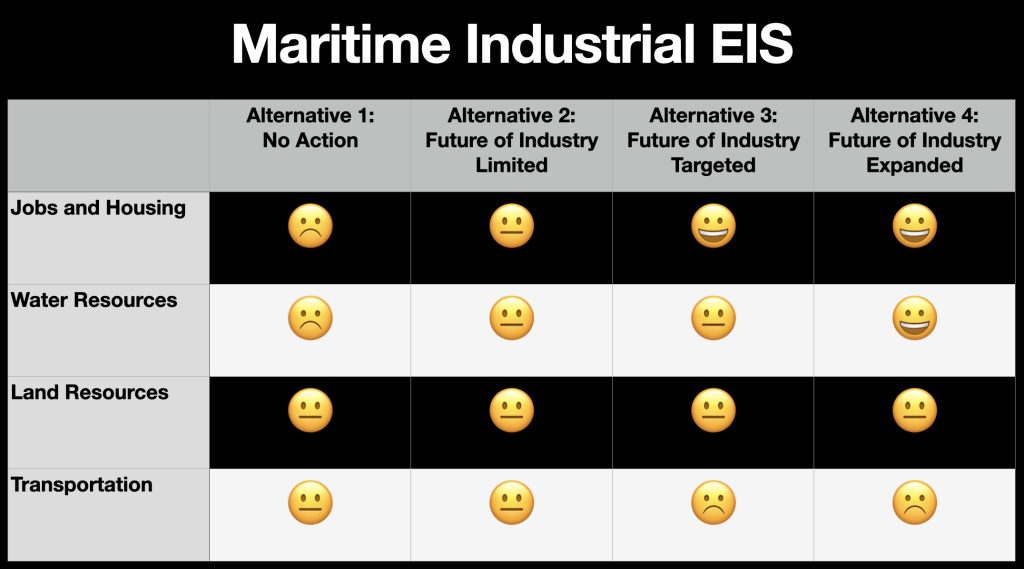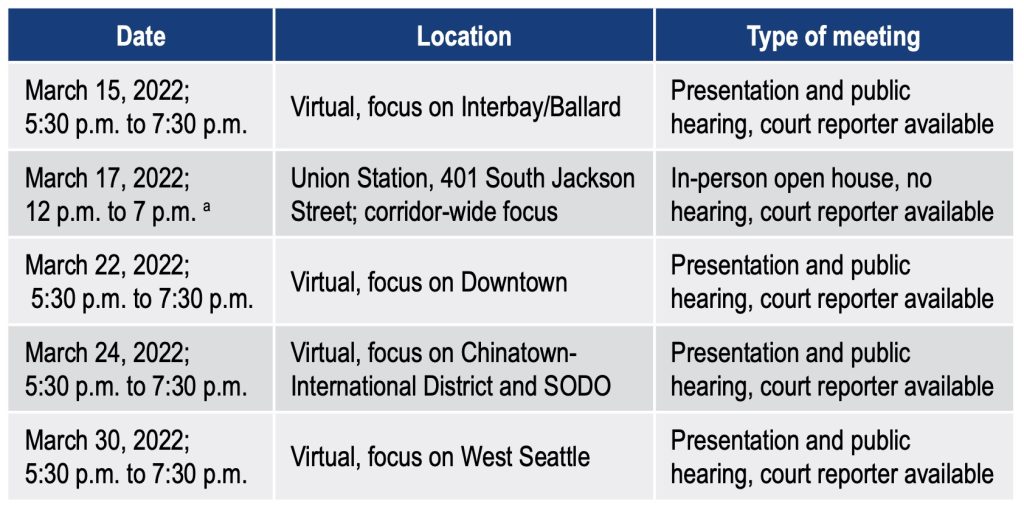
An Environmental Impact Statement (EIS) sounds like a highly technical and complex mechanism of governance. They take years, spiral into hundreds of pages with massive appendices, and get fought over in court. The truth is that EIS are a simple concept with plenty of spots that you can influence the shape of the city in the future.
Two very important EIS are being prepared right now. Seattle’s Office of Planning and Community Development (OPCD) is studying how to rezone the city’s industrial lands. The agency released a Draft Environmental Impact Statement examining how much land should be reserved for traditional industrial uses and how much should be converted to new innovation and urban industrial zones. Comments are due March 2nd.
At the same time, Sound Transit has released a Draft EIS for proposed light rail alignments to Ballard and West Seattle. Determining the preferred location for stations, rail lines, and the project’s expense, the agency’s document will set 20 years of transit expansion. The document will open to comments on January 28th and remain open until April 28th. (Our initial analysis is here.)
The projects are huge, the acronyms are intimidating and the heft is overwhelming, but in reality, an EIS is nothing more than a decision making grid. At its heart, an EIS is the same chart you mentally run through to decide what to eat for dinner. Should we order Thai delivery, go for pizza, or stay in and finish the lettuce that’s slowly liquefying in the bottom drawer? If you draw that out as a chart, you’ve completed the basics of an EIS. You are qualified to have a say in this process. And you should.
The Dinner EIS
Let’s consider that decision about where to go for dinner once more. We’re hungry and want food, and there are three ways to achieve that objective: eat what’s in the fridge, order Thai, or go to pizza. There is also an unstated fourth option of skipping dinner.
To decide between these choices, we need some criteria. Those might include finding something cheap, particularly satisfying, and close to home. We might also have some particular issues today that don’t appear other times we make this decision. Maybe we know there will be pizza lunch later in the week.
Normally, all that goes through our head and we start dialing for Thai because the need for garden rolls overrules all else. But if we pause, it’s possible to draw out our decision making as a table. Choices at the top and criteria at the left.

And that’s all an EIS is. It’s a list of choices — called alternatives in EIS lingo. And they’re compared against a list of criteria — elements in the nomenclature of the day. This chart will not make the decision for us. How we fill in the chart and weight the criteria will not make the decision for us. But it becomes really evident how defining those choices and criteria, these alternatives and elements, is vital.
What makes an EIS a decision making tool rather than an overblown pro/con list is the legal requirement to stop, deliberate, and contact the public at three important places. The first is scoping. That’s when the agency starts the process by laying out the alternatives and elements. Have you ever heard the city made a decision and asked “why didn’t they even consider this idea!?” Well, it’s because that wasn’t one of their alternatives set at the “scoping” phase of the EIS. Scoping is the 30 days between when the agency announces they need to make a decision, and when they huddle with all the proposed criteria and alternatives.
The second public outreach happens with a Draft EIS. It’s when the agency takes all those proposed criteria and alternatives to make a first swing at filling in the chart. This is the point both Sound Transit and OPCD are with their projects. At this point, it’s a big document with lots of information. But again, at its core, it’s this simple chart of alternatives measured against criteria.

The final public outreach happens with a Final EIS — the agency’s last try to address the public’s comments before the agency or electeds make a decision. This is a full public document with publication and official notice to impacted parties and folks who participated in the process. From here, the EIS goes to decision makers to read and absorb. It can also go to the municipal hearing examiner for an appeal (repeatedly, if it’s a bike path) before heading to the courts.
How to read the EIS
Now that we know the conceptual simplicity of an Environmental Impact Statement, can we translate that into a functional simplicity? Yes. Don’t read all of an EIS unless you have to. And the only time anyone needs to read an entire EIS is if they plan to sue the city for failing to develop a complete EIS. Otherwise, pick and choose the parts you want.
Interested in historic resources? Read the section about historic resources. Noise? Read the noise part. Just like sections of the Sunday newspaper go straight into the bin, you don’t need to download and read an enormous section about soil stability if you don’t care about dirt.
To help focus on the parts that require attention, it’s useful to have a map of document. Each EIS has five parts.
Intro letter and Fact Sheet. These are very useful as synopsis of the agency doing the work and a 100,000 foot picture of the project. They’re also three to five pages. Read it.
Executive Summary. Unfortunately, these tend to be long versions of the Fact Sheet, often with some flowery language to appease the budget sponsors and back patting for consultants. Doesn’t even count as a section, except it is an overview of the whole document with some high points on impacts and mitigation proposals. Skim for titles and interesting charts.
Alternatives. This is most of the mandatory reading. These are the alignments or big ideas being proposed. For Sound Transit, this is where the routes can go. For the Industrial Zoning, this is the maps of new zones and their definitions. Here’s where the important decision making starts. Also includes a lot of good maps and pictures. Read it.
Analysis. Here we have the bulk of the EIS, with sections of analysis running hundreds of pages delving into the meat of individual topical studies. The Industrial and Maritime DEIS has 500 pages here, divided among 14 subsections. This is the place to selectively spend your time. The topics covered here can get micro (light glare) or macro (land use) while very focused on a particular topic. Or, in the case of the Sound Transit DEIS, divided between West Seattle, Downtown, and Interbay/Ballard stations. If you’re not interested in that topic or area, skim or skip. Spend the time on what interests you.
Appendices. Often one finds the reports of public hearings and previous studies in the appendices. The only useful thing is to search through looking for your name if you commented on earlier scoping or drafts. Occasionally, there is a buried extra bit of analysis or deeply in-depth transportation study. Skip if that’s not your interest.
Reading for content and comment
Now, having winnowed 700 pages down to a solid 50 or so, it’s easier to find things to actually focus on. In the shorter document, it is easier to see connections between things that interest you and ideas that simply don’t make any sense. Unfortunately, that’s still a pretty big question, so it may help to break it down into parts. Here are two things I focus on while reading most reports:
- Is any of this making a decision before the decision? These documents are supposed to be providing information so policy makers can have a whole array of good ideas. Occasionally the report dismisses options for no reason. While it’s not an EIS, one of the best examples of decisions-before-the-fact is the Ballard Bridge study. It summarily dismissed a lot of intersection designs with very little justification. The report just tossed the idea for anything except a death pretzel at the south end of the Ballard Bridge. Keep an eye open for these.
- Does any of this information support or contradict something I already know? Many of us cross particularly busy roads or see people lined up waiting for buses at dangerous intersections. So when an EIS comes out stating that a bus route operates just fine, it should be called out. On the other hand, an EIS can have data we don’t see elsewhere. The Industrial EIS points out that only 2% of traffic in the city is truck freight. So it’s important to highlight that for when folks complain that we need to maintain urban highways to move trucks.
Again, you know how you move through the neighborhood and what you see in the city. If something in the EIS contradicts what you have seen or an important fact you understand, bring it up in a comment. And boost the smart ideas.
Those really are the easy foundations to an EIS comment. Just send an email to the listed folks in the EIS. All the agencies have websites and there’s someone to talk with next to the document download. For the Industrial Lands EIS, send your comments here. For the Sound Transit EIS, write here. You can start with these two things — ideas prematurely booted, and stuff in the report that contradicts your experience. That can be the end of your comment, or just the beginning.
A Couple of things to note.
Dates. Being a statutorily required document, the dates for drafting and commenting on an EIS are vital. There’s 30 days to comment during scoping. There’s 45 days to comment during the drafting. They can be extended by formal request to the agency. During those times, there is also at least one required hearing held by the agency. These are official public hearings where comments must be logged and responded to in the final EIS. Missing dates means that comments will not be included for response.
Alternatives. It is also very important to get to the core of what the alternatives actually propose and whether they are all-or-nothing choices. For example, the Industrial and Maritime DEIS proposes three new industrial zones. However the zones are not the alternatives! The proposed alternatives are various combinations of the three new zones. This is why it’s useful to read the entirety of the Alternatives section because it helps clear up some of the issues around what’s actually being proposed.
The final decision makers. As often the case with deciding what to do for dinner, the person making the suggestions is not always the final decision maker. In the case of the Industrial and Maritime DEIS, the final decision maker will be the Seattle City Council when it decides what the language of the new zones will be and the specific areas to apply them. For the Sound Transit extensions, the final decision makers are the Sound Transit Board, themselves local electeds from the region. These are all stated under “Next Actions” or “Required Approvals” in the Fact Sheet at the front of the EIS.
For folks interested in these projects, the important thing here is to determine how much effort is necessary and where it’s best spent. EIS are vitally important. But when there’s going to be a legislative process following them, it may be most important to get good information into the EIS rather than a specific outcome. However, when the document heads towards a final decision at a board or agency, it’s important to get the outcome exactly right.
You Can Love An EIS Too
The words Environmental Impact Statement can be scary and intimidating. Drafts, elements, scoping, proposed alternatives, interocitor. Please don’t let the terminology drive you away. Like Dr. Spock said to new parents: you know more than you think you do. It applies here.
Behind all these big documents are just people. And their job is to help agency heads and electeds work towards a decision. They don’t want you coming late in the game to complain about the work they did. You can talk to them about the stuff that’s important to you. They actually want to hear from you! Look at the EIS. Read the parts that interest you. Submit comments about things that don’t make sense. Talk to Sound Transit about alignments here. Talk to OPCD about the Industrial and Maritime DEIS here.

Washington law says that big decisions in government need to examine impacts based on good information. This is the basis of the Environmental Impact Statement. But as we see, it’s just a what-to-eat chart putting information in front of electeds so they can make the best decision possible. It came under the environmental label because so many government decisions ended up dumping deadly sludge into waterways or poisoning towns. EIS have expanded to include many of the things like housing and equity we see today. The electeds can still decide to dump deadly sludge into the river, but the EIS makes sure there’s plenty of red flags yelling “THIS IS BAD!” Or lots of green flags to steer them in a better direction.
You can help make sure all the red flags (and green flags!) are included in future decisions. Whether about industrial lands or light rail stations, please remember that you know how your neighborhood works. You know how you move through the city. OPCD, Sound Transit, the city council, the state, and the feds are proposing changes that will impact things you know and care about. EIS are here for you to engage. We believe in you.
Ray Dubicki is a stay-at-home dad and parent-on-call for taking care of general school and neighborhood tasks around Ballard. This lets him see how urbanism works (or doesn’t) during the hours most people are locked in their office. He is an attorney and urbanist by training, with soup-to-nuts planning experience from code enforcement to university development to writing zoning ordinances. He enjoys using PowerPoint, but only because it’s no longer a weekly obligation.

